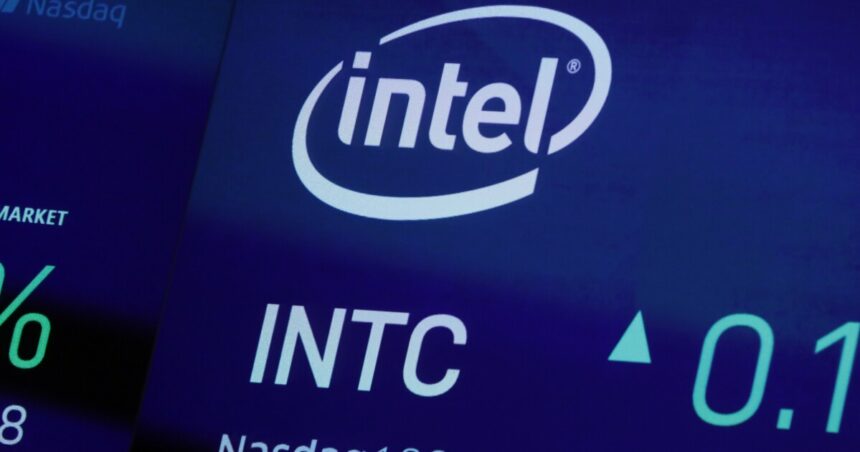Chipmaker Intel is slashing 15% of its workforce — approximately 15,000 jobs — in an effort to reposition itself in the market and compete with leading rivals like Nvidia and AMD.
In a memo to employees, Intel Corp. CEO Pat Gelsinger announced that the company aims to save $10 billion by 2025.
“Simply put, we must align our cost structure with our new operating model and fundamentally change the way we operate,” he wrote in the memo published on Intel’s website. “Our revenues have not grown as expected — and we’ve yet to fully benefit from powerful trends, like AI. Our costs are too high, our margins are too low.”
The workforce reductions follow a disappointing quarter and outlook for the renowned chip manufacturer founded in 1968 during the early days of the PC revolution.
Next week, Gelsinger stated that Intel will introduce an “enhanced retirement offering” for eligible employees and launch a program for voluntary departures.
“These decisions have challenged me to my core, and this is the hardest thing I’ve done in my career,” he expressed. The majority of the layoffs are anticipated to be finalized this year.
The company, headquartered in Santa Clara, California, is also halting its stock dividend as part of a broader cost-cutting strategy.
Following a loss in the second quarter and a slight decrease in revenue, Intel provided a third-quarter revenue forecast below Wall Street’s projections.
RELATED STORY | AI and cutting-edge computing the focus at SIGGRAPH conference
Its stock plummeted 19% in after-hours trading, signaling a potential $24 billion decrease in market value when trading resumes on Friday.
The company reported a loss of $1.6 billion, or 38 cents per share, in the April-June period, down from a profit of $1.5 billion, or 35 cents per share, a year earlier. Adjusted earnings, excluding special items, were 2 cents per share.
Revenue decreased by 1% to $12.8 billion from $12.9 billion.
Analysts had anticipated earnings of 10 cents per share on revenue of $12.9 billion, based on a FactSet survey.
“Intel’s announcement of a significant cost-cutting plan, including layoffs, may improve its short-term financials, but alone, it is not sufficient to redefine its position in the evolving chip market,” said eMarketer analyst Jacob Bourne.
Gelsinger mentioned in a call with analysts that Intel had acknowledged its AI PC market investments would impact profit margins in the near term but believed they would benefit the company in the long run.
“We believe the trade-offs are worth it. The AI PC segment is expected to grow from less than 10% of the market today to over 50% in 2026,” he stated.
Unlike its competitors like Nvidia, Intel not only designs but also manufactures chips. The company has been focusing on strengthening its foundry business to produce semiconductors in the U.S., competing with giants like Taiwan Semiconductor Manufacturing Co. (TSMC).
With support from Gelsinger’s advocacy since assuming leadership in 2021, Intel has greatly benefited from the 2022 CHIPS and Science Act. The Biden administration played a key role in shepherding the legislation through Congress in response to concerns following the pandemic about the potential economic impact of losing access to chips manufactured in Asia.
RELATED STORY | White House to give Intel $19.5 billion to boost US chip production
President Joe Biden, in March, lauded an agreement to provide Intel with up to $8.5 billion in direct funding and $11 billion in loans for computer chip plants across the U.S., emphasizing the investment in Arizona and describing it as a means of “bringing the future back to America.” Gelsinger hailed the CHIPS Act as “the most critical industrial policy legislation since World War II.”
In September 2022, Biden commended Intel as a job creator for its plans to establish a new plant near Columbus, Ohio. He praised the company for its intention to “build a workforce of the future” through the $20 billion initiative, which is expected to generate 7,000 construction jobs and 3,000 full-time positions with an average annual salary of $135,000.
“The U.S. government aims to revitalize domestic manufacturing, particularly in advanced computer chip technology,” noted Bourne. “Intel has been singled out for this funding. However, there are multiple aspects involved, from constructing specialized facilities to upskilling the local workforce in these plant locations. It’s a process that takes time and doesn’t happen overnight.”





